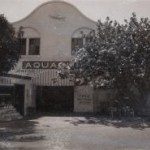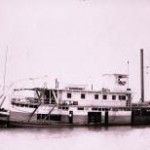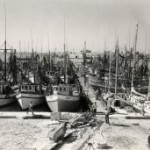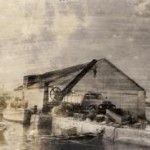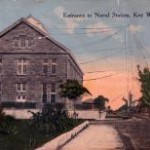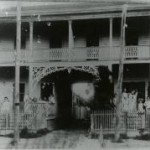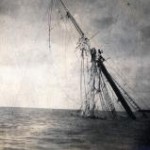Come experience 120 Historic Markers in the Largest Historic District of Frame Buildings in the United States. See photos and listen to the history and stories these buildings have to tell. Take a self-guided tour and discover a little piece of paradise.
Check Out Our YouTube Videos
Key West Aquarium
The Key West Aquarium was the first open-air attraction in Florida. Built between 1932 and 1934, when Key West was in the grips of the Great Depression and on the verge of bankruptcy. The Aquarium was the invention of Dr. Robert Van Deusen, the Director of the Fairmount Park Aquarium in Philadelphia. A WPA project, it was the first island tourist attraction as well as a research center and clearing house for subtropical aquatic animals and plants.
Ferry Boats
Ferries were the lifelines of the Florida Keys during the last two centuries. Henry Flagler relied on these vessels both to build the Over-Sea Railroad, which stretched 156 miles from the mainland, and to carry his train cars over 90 miles of open ocean to Cuba. In 1935, a devastating hurricane hit the Middle Keys, wiping out the railroad. Ferries filled the transportation gap between the time the railroad was destroyed and the Overseas Highway was completed. Today the tradition of ferry travel to the mainland continues.
Island City House
This wooden structure was built in the 1880s by a wealthy Charleston merchant. The private residence was well situated in what was then the center of town. In 1908, the owners transformed the house into a hotel in anticipation of the completion of the Over-Sea Railroad. The structure was enlarged and a third floor was added to increase room capacity. Notice the wooden silhouette of the railroad's unique bridge spans stretching across the top facade of the building. By 1912 the building opened as Island City House Hotel.
Shrimp Boat Fleet
Florida pink shrimp were discovered at the Dry Tortugas in 1947. News of the find spread quickly and by the 1950's these docks were home to 500 shrimp trawlers. There were so many boats in port that it was often said that you could walk across one side of the seaport to the other without ever touching water. The era of shrimping was nicknamed "the pink gold rush".
Thompson's Fish House Museum
This wooden structure was built by Norberg Thompson. It has seen many uses but began as a fish and turtle packing house serving destinations throughout the world. Submerged wooden cages beneath the building used to house exotic fish for sale to aquariums. In later years it was a marine engine repair and ship wright's shop. During the golden days of shrimping in the 1950s, it became the epicenter of the shrimp industry with nearly 500 shrimp trawlers in port at a time.
Mel Fisher Maritime Museum
This building was built on the outskirts of the naval base named for President Truman. The Navy constructed the structure for a dual purpose.The main part of the building was used for general storage with the top floor retrofitted for coal storage. Steamships were the heart of the naval fleet. An abundant supply of coal was vital for the fleet and the high volume of commercial shipping that used the port. This part of the waterfront was covered with coal buildings and additional storage space was needed.
The Arch House
The Arch House and is the oldest remaining Carriage House in the Historic District. It is recognized as a novelty of architectural design and function. In the 1880s, it was uncommon for the average person to possess a horse much less a carriage. Horses, building materials, and the essentials of life had to be brought from the mainland by sail boat. The house and an adjoining cigar factory stand as testament to an era of wealth and prosperity from the Civil War until 1910.
Old Coca-Cola Bottling Court
In 1892, a hardware store was constructed here to service the surrounding cigar and fishing industry. By 1914 Jack and Rosa Williams opened Jack's Saloon. The saloon was well situated to wet the whistle of sailors, fishermen, and the public. By 1923, the building was transformed into the Coca-Cola Bottling Plant. Bottling machines carrying glistening bottles of the refreshing drink were visible through the front windows. With the advent of the Overseas-Highway, the bottling plant closed and Coca-Cola products were trucked in from the mainland.
United Methodist Church
Methodist preaching was first heard on the island in 1832 when two missionaries arrived by schooner. The Methodist Episcopal Church, South, was formed in 1845 making the Old Stone Church the oldest Methodist Church in Southeast Florida. The church structure is made of coral rock quarried from the site and was built to cover their semi-permanent wooden sanctuary. Upon the completion the old church was dismantled and carried out the front door. Over the years, four Methodist congregations united to form the foundation of the current church.
Wreckers
For over a century the Florida Keys reaped the rewards of shipwrecked vessels on its 200 miles of reefs and shoals. In the early 1800s there was a shipwreck a week. During the 1830s, nearly 60-90 percent of all exports from Florida came from wrecking. The use of “false lights†to lure ships onto a reef is a popular fable. In reality an unidentified light in the night represents land or a maritime danger to be avoided.
